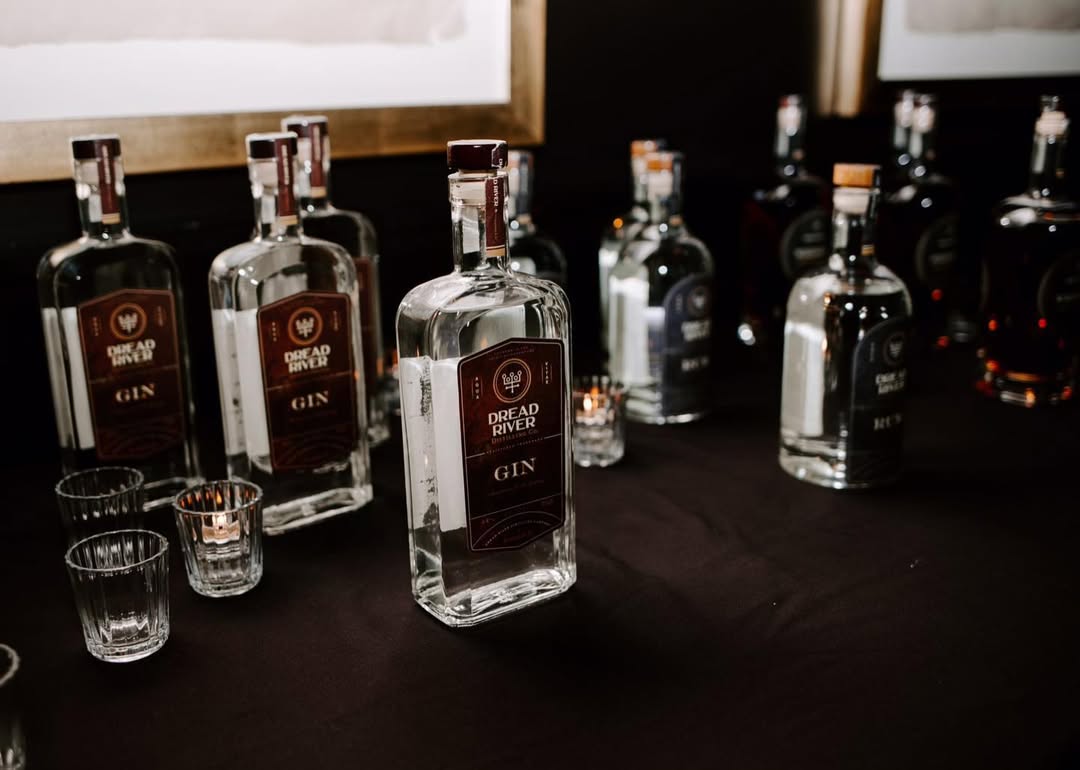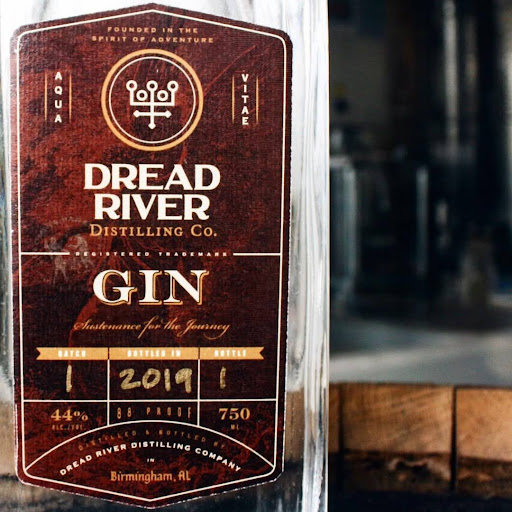Gin 101: Understanding Botanicals & Flavor Profiles
May 15, 2025
Dread River

Gin botanicals are so much more than just ingredients; they are the very essence of this great spirit. Though the bold juniper presence takes center stage, it is the supporting cast of botanicals in gin that shapes each expression’s unique character. In the meantime, exotic ingredients like sakura leaf (spring), sakura flower (spring), yuzu (winter), ‘gyokuro’ tea carry the palate around the world and seasons.

Along with faint spicy, citrus notes, some elements give the gin a menthol, eucalyptus flavour and develop a sensory tapestry that sets this spirit apart from the relative neutrality of vodka. The amazing trip through the botanical terrain of gin shows at its core not just a drink but a story distilled into liquid form—a narrative we at Dread River celebrate with reverence and creativity.
What Makes Gin, Gin?
The fundamental distinction when considering what is the difference between vodka and gin lies in their production philosophy. Gin seizes complexity via botanical infusion, even while vodka seeks pristine neutrality blank canvas devoid of identifying features. Without their unique piney scent, a spirit cannot really claim the gin label, no matter its other botanical components; hence, juniper berries stand as the non-negotiable foundation of the identity of gin. Throughout centuries of development, this vital feature has remained constant and serves as the keystone binding the varied gin family.
A Spirit with Global Influence
With its genesis in the Netherlands as “genever”, a juniper-based malt wine predecessor—gin was revolutionized when adopted by England in the 17th century. The development of column stills facilitated the creation of cleaner, lighter spirits that showcased botanical nuances with greater clarity. The modern-day global distilling renaissance has pushed gin’s frontiers further again, with craftsmen in Tokyo to Tasmania interpreting this heritage through the prism of native botanicals, yet still respecting juniper’s vital role.
Discover more about gin’s interesting history here.
The Role of Botanicals in Gin
Botanicals encompass the wide variety of plant-derived ingredients that flavor, scent, and define gin. The typical botanical portfolio usually consists of herbs (thyme and rosemary), spices (cardamom, cinnamon), fruits (orange peels, berries), flowers (chamomile, lavender), and roots (angelica, orris). Every botanical adds its own aromatic components—essential oils, terpenes, and phenols—to the mix that interact during the distillation process to produce the complex profile of gin. The proportions, method of preparation, and distillation process used with these plants make up a distillery’s jealously guarded secret.
- Juniper Berries – The Star of the Show
Junipers, technically cones, provide gin’s piney, resinous flavor profile through alpha-pinene and other terpenes. Besides their instantly identifiable piney flavor, juniper berries offer great complexity: bold citrus notes reminiscent of lemon and grapefruit, a bit of spiciness found in black pepper, and a strong earthiness that balances the spirit. Juniper’s fragrance varies much by geographic source; the Mediterranean species generally have more distinct citrus notes than do the Northern European ones.
Discover the fascinating science behind juniper’s flavor compounds here.
- Supporting Botanicals
Master distillers orchestrate juniper’s powerful voice with a choir of assisting botanicals to produce equilibrium and define unique house styles. Coriander seeds add citrus and spicy facets with hints of sage and lemon; angelica root adds earthiness with undertones of celery; angelica root adds earthiness with celery notes underlying; orris root acts as a fixative, stabilizing volatile odors with more subtle violet notes; and citrus peel lemon, orange, or more exotic provides essential oils that add brightness to the entire essence.

Understanding Flavor Profiles of Gin
Classic London Dry Gin
London Dry is the classic expression of gin: juniper-forward, clear, with little sugar and strong botanical flavor. Though its name might suggest otherwise, London Dry denotes a manufacturing process rather than a site of origin; it asks that all flavors be added via distillation versus post-distillation additives. The expected profile usually shows bold citrus notes together with juniper’s resinous quality, warm spice, and faint earthiness. The manufacturing sophistication of this design makes it the basis for famous drinks like the Martini and Gin & Tonic.
Explore more about the London Dry Gin
New Western or Contemporary Gin
By readjusting the botanical hierarchy, the modern gin movement has broadened the expressive range of the spirit. New Western types frequently promote formerly secondary botanicals to co-starring parts while keeping enough juniper to maintain the legal definition of gin. While others feature lavender, chamomile, or local botanicals, linking the spirit to particular terroirs. Contemporary gins excel in cocktails that highlight their unique botanical signatures, from floral martini variations to fruit-forward summer libations.
Old Tom Gin
Old Tom gin usually has a faint sweetness from extra sugar or glycerin striking the historical balance between genever’s malted strength and the sharp precision of London Dry. This style dominated cocktail culture during the 19th century before nearly disappearing during Prohibition. Its recent revival has exposed modern palates to its unique nature: juniper presence mellowed by mild sweetness, sometimes followed by licorice notes and spicy warmness. In traditional cocktails including the Martinez and Tom Collins, where its delicate sweetness balances tart ingredients yet preserves gin’s vital botanical complexity, old Tom shines.
Navy Strength Gin
With its genesis from the British Royal Navy’s custom of gauging the strength of spirits by burning gunpowder drenched in the liquor, Navy Strength gin maintains a formidable 57% ABV or above. Far from being merely stronger, this elevated proof unlocks additional aromatic compounds from botanicals, resulting in intensified flavor rather than merely increased alcohol perception. This robust profile performs admirably in bold mixological contexts like the Negroni, where its increased botanical presence holds its own against powerful companions, including Campari and sweet vermouth.
The Art of Tasting Gin
Step 1: The Nose
Adequately assess gin by first considering its scent profile. Gently rotate room-temperature gin in a tulip glass to volatilize volatile compounds. Deliberately inhale to identify juniper’s piney character, followed by successive layers of botanicals—citrus brightness, floral subtlety, warming spice, or earthy depth. Refine your nosing skills here.
Step 2: The Sip
Take a modest sip, allowing the spirit to coat your entire palate. Note the temporal progression:the introduction (usually citrus and juniper), mid-palate building (supporting secondary botanicals), and ending (usually a build of spice or gentle sweetness). Notice the mouthfeel—from delicate lightness to oily lavishness.
Step 3: Try It in a Cocktail
Experience the gin in classic applications like a Gin & Tonic or Martini, demonstrate how various botanicals respond to mixers and modifiers, illustrating the versatility of the spirit in these situations.
Choosing the Right Gin for You
For Juniper Lovers
Those who appreciate gin’s traditional character should gravitate toward classic London Dry expressions where juniper maintains unquestioned prominence. Supportive botanicals complementing juniper’s vital piney nature improve rather than obstruct it. Such expressions provide the definitive gin experience, particularly in classic cocktails where juniper’s presence is expected and celebrated.
For Adventurous Drinkers
Contemporary gins will be especially gratifying for palates desiring botanical exploration outside of normal bounds. These expressions often feature unexpected botanical inclusions—elderflower, lemongrass, or regional specialties—that create distinctive flavor signatures while maintaining sufficient juniper presence to qualify legally as gin.
For Sweet Cocktail Fans
Old Tom gin’s subtle sweetness and smooth character make it best suited for connoisseurs who enjoy softer edges in their spirits. This traditional style bridges the gap between gin’s core botanical character and the drinkability of sweeter alternatives, and as such is a great gateway expression for consumers building their enjoyment of juniper-based spirits. In fruit-inclusive cocktails or sweet modifiers, Old Tom stays true to itself without generating jarring dissonance. Dread River’s take on this timeless style pays homage to its heritage while bringing modern sensibilities to the palates of today.

As we come to the end of our botanical odyssey through the scented world of gin, we invite you to bridge appreciation and experience with a visit to Dread River Distilling Co. in downtown Birmingham, Alabama—a state-of-the-art distillery where tradition blends with innovation. Discover our bold, distinctive spirits crafted on custom-designed copper stills; savor creative cocktails in our sophisticated lounge; feast on refined Southern cuisine in our restaurant; or witness the meticulous distillation process during an immersive tour. Whether you’re marking a special occasion in our event venue or just looking to broaden your botanical experience with our award-winning gin, Dread River is Southern craftsmanship raised to artistry. Still lingering on the question of what the difference is between vodka and gin, then Dread Rivers Distillery is your place!